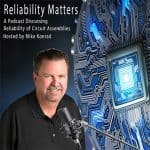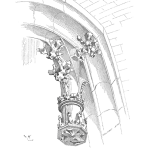
What’s Wrong with Using ‘FITs’ to Measure Electronic Component Reliability?
podcast episode with speaker Chris Jackson
Every industry has its own way of characterizing reliability metrics. For example, the ball bearing industry uses the metric ‘B_10’ to represent the time by which they expect 10 % of all ball bearings of a specific type to fail. Electronic component manufacturers use the term ‘Failures in Time’ of ‘FITs’ to describe the reliability of their products. But what is a FIT? And how can you use it to measure reliability? Did you know that many electronic manufacturers advertise ‘FIT values’ that imply a mean time to failure of over 1 000 years? If you are involved in electronic component reliability, then join us for this webinar!
[Read more…]









